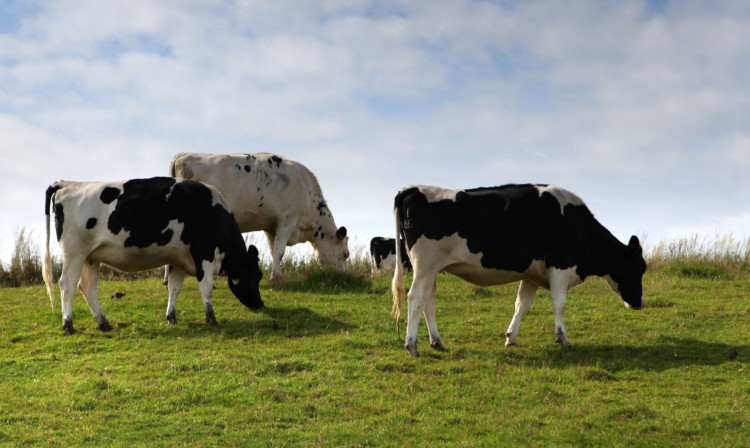The number of dairy farms in Scotland has hit a record low after more than 20 farmers made the “heartbreaking” decision to turn their back on milk production last year.
For the first time since records began 110 years ago, the number of dairy farms north of the Border has dropped below 1,000 to just 993.
The figures were revealed by the Scottish Dairy Cattle Association, which said the net loss of 18 farms last year was evenly spread across the country.
According to the SDCA, Dumfriesshire suffered the greatest exodus, losing six herds.
However, Wigtownshire gained three new dairy enterprises.
Across Courier Country the figures stand at just eight herds in Angus, five in Clackmannan, 24 in Fife, three in Kinross-shire, 30 in Stirling and three in Perthshire.
But while dairy farm numbers dropped significantly, Scotland’s total dairy herd remained almost on par. Total cow numbers at 163,637 fell by only 107 on the year, with many of the cows sold by those farmers leaving the dairy industry being subsumed by expansion at the remaining herds.
NFU Scotland milk policy manager George Jamieson said: “The further decline in dairy herds is on the face of it disappointing, but the decision to give up milking cows is never one taken lightly by any farming business.
“That said, the positive figure is that dairy cattle numbers are being maintained in Scotland and new entrants to dairy is a pleasant sign that the prospects for the dairy sector are encouraging.”
Mr Jamieson said there are many reasons for dairy farmers exiting the sector, “but there is no doubt that there have been many years recently when returns to producers, who work long hours with huge financial and technical commitment, did not deliver enough incentive to carry on.
“There are signs and a belief that going forward there may be better times ahead for the whole Scottish dairy sector, but this will be founded on a better and more secure future for those producing the milk.
Mr Jamieson continued: “There is substantial evidence that the global demand for dairy products will outstrip supply in the short and medium term.
“This is acknowledged as a genuine opportunity by all dairy producing regions.
“Scotland can be a part of this, as explained in the recent Scottish dairy review, if we can develop new markets and products supported by efficient, competitive producers and processors.
“Dropping below 1,000 dairy farms in Scotland is a sad reflection on the UK dairy supply chain, which has failed to instil confidence in producers that they will receive a reasonable share of the supply chain value.
“With the voluntary code of practice there is a genuine opportunity to deliver the kind of transparency and trust to inspire a collaborative supply chain which is fit for the challenges and opportunities ahead.
“The Scottish dairy review and the code are two opportunities that must not be wasted, as they could ensure that the next report from the SDCA highlights an upturn in our production base.”
The number of farms remaining in the dairy industry differs significantly from 1903, the year records began.
In that year Scotland had 5,735 dairy herds with 223,666 cows and a herd size of 39, while today’s 993 herds and 163,637 cows run at an average herd size of 165.
SDCA secretary Janette Mathie said: “From the dairy farmer’s point of view 2013 was a much better year weather-wise but also financially, with milk prices getting nearer a realistic level and feed being more plentiful than the previous year otherwise, the number of herds giving up would have been much greater.
“However, the trend of higher returns will have to continue, to maintain the present overall production.”
